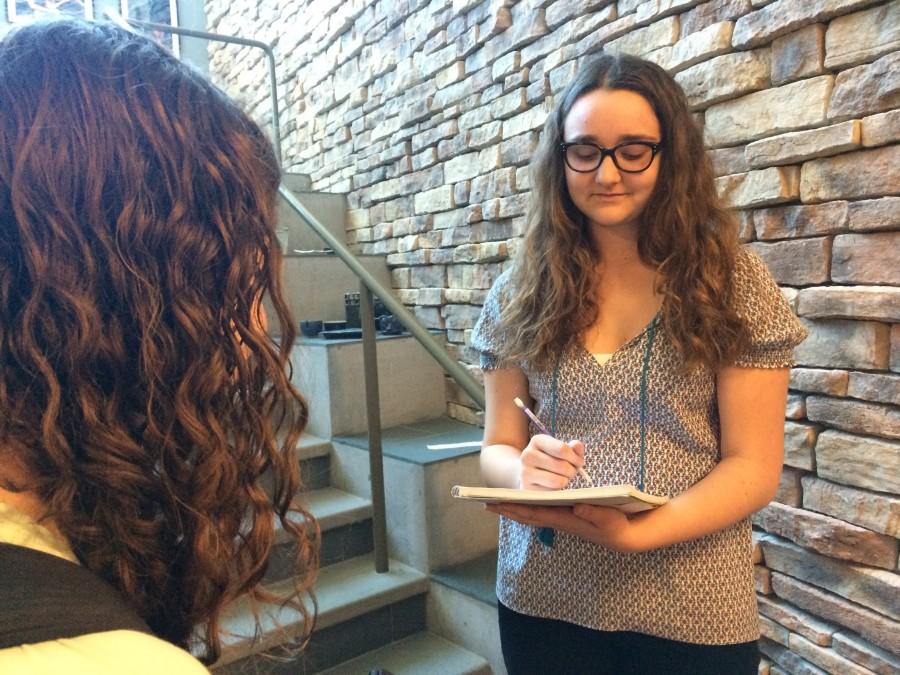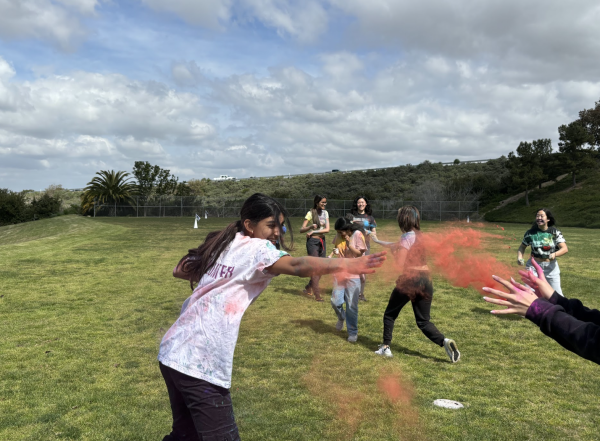Reader Engagement, Fresh Content and Popularity ‘live’ on a website
This feature by Kristin Saroyan placed second in the OCJEA feature writing competition Feb. 28.
He may be dressed traditionally in a conservative white-button down and khaki pants, but Michael Fleeman in no way clings to the tradition of in-the-box, print journalism. He doesn’t condemn newspapers, but instead he looks steadfastly toward the future of online journalism and its exciting applications.
“Writing and reporting for the web is unlike writing and reporting for print,” Fleeman said “You may have heard that online journalism is a digital nightmare. What does it mean to be a digital reporter? Reporting is not the same as it used to be.”
Fleeman got his start in journalism as the editor-in-chief of Dana Hills High School’s newspaper Dolphin Dispatch. After graduating with a bachelor’s degree from U.C. Berkeley and a master’s degree from Columbia University’s Graduate School of Journalism, Fleeman eventually became a reporter for the AP, the west coast editor of People.com and a best-selling novelist.
Now he freelances for Reuters, teaches UCLA Extension and believes wholeheartedly in the merit of online journalistic techniques to spread news creatively and effectively.
“Get your readers engaged,” Fleeman said. “Get them reading. Get them thinking. Get them involved. At the end of the day if you do these things, you are successful.”
Fleeman preaches the importance of reader engagement, fresh content generation, website competition and search engine popularity. Consumers of media are no longer only considered “readers,” but also watchers, listeners, interactors and appropriately dubbed “users.”
“A news website is a very needy houseplant,” Fleeman said. “You can’t overwater it, and you can’t underwater it, or it gets limp and dies. A website is like a living, breathing thing. Keep your digital site fresh and interesting.”
The value of multimedia and creativity on the web is clear to Fleeman who admires the multifaceted storytelling techniques of online news pioneers like Buzzfeed and Huffington Post. Each news site, according to Fleeman, found a way to invite users with highly accessible formats and interfaces that utilize creative list-style features, audio and pictures.
“Audio doesn’t take as much skill as a feature story, but imagine if a person is driving home and can’t read your story,” Fleeman said. “There’s another way to cover news. Try telling a story in audio or take it up a notch and try to tell a story in photos. Think digitally!’
The most important thing is to get the news to the people and in addition to using fresh mediums like audio and images, . Fleeman upholds social media platforms like Twitter as the main news source of today.
“If you’re going to be a digital reporter, you need to learn how to manipulate social media. You need to figure out how to get social media on your side,” Fleeman said. “Always tweet, tweet, tweet everything you put online and in the newspaper. A lot of people get their news now from Twitter. You don’t want to let three days go by and leave Twitter followers hanging.”
At the end of the day, Fleeman wants to see reporters relying less heavily on word counts and more on their other journalistic tools and techniques.
“Your toolbox is so much larger than it used to be. You will be telling stories in ways you can’t imagine right now,” Fleeman said. “I’m a big believer in the future of journalism because it is so unknown. Print journalism is not dead. It’s just not the only way to tell a story.”








